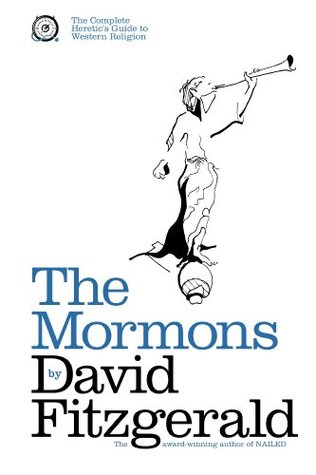More on this book
Kindle Notes & Highlights
Read between
July 16 - July 21, 2018
Others may feel it’s religious bigotry to criticize someone else’s religion, but frankly, that’s condescending crap. Religious opinions should be no more immune to discussion and criticism than scientific or political ones. I respect Mormons and believers of every other stripe enough to take their assertions seriously enough to point out where they are untrue. That is not bigotry. As the late Senator Daniel Patrick Moynihan said, everyone is entitled to their own opinions, but not their own facts.
The simple fact that the LDS church, like every other religion on the planet, demands moral authority over any of us is more than enough reason to examine their claims about reality—and oppose them if they are wrong.
In 2004, only one apostle had no blood ties to any other general authority—though his wife was related to several current general authorities and was the direct descendent of a former apostle. Like any corporate entity, it has its internal squabbles, power struggles, and office politics, but at heart, the Mormon Church is very much a family-run business—and it is a big business...
Seventh-Day Adventist Church is the biggest surviving descendent of the movement).
Smith admitted at his trial to defrauding citizens being a “glass-looker”—organizing gold-digging expeditions and also to claiming to possess dark or “necromantic” powers,; namely, being able to use a magic “seer-stone” to find hidden treasure, a not uncommon practice at the time.
Then, in 1971, the original 1826 court record was discovered in the basement of the County Jail in Norwich, New York. In the court record, Joseph confessed that he had been offering his services as a seer for the last three years, which put his money-digging activities from 1823 to 1826. To put it another way, Joseph was operating as a con artist, during the same time he would later claim he was preparing himself to be worthy of receiving the gold plates that an angel had told him lay buried near his home. ix
There are in fact at least ten different—some radically different—known versions of the “First Vision.”* Although Joseph claimed he was persecuted when he told people of his heavenly vision, in reality there is no evidence that Joseph told anyone about the vision until after the Book of Mormon was published many years later. There are no accounts in local newspapers, by neighbors, preachers or even by the members of Joseph’s own family.xvi The familiar official version above wasn’t even written until 1838, and didn’t finally appear in print until 1842. It is, in fact, the fourth version of the
...more
The earliest known version was found in Joseph Smith’s personal letterbook, written in 1832, ten years before the official account of the First Vision, but still 12 years after the fact.
Strangely enough (or perhaps not so strangely by now), Joseph Smith also completely neglected to mention his First Vision when he wrote the first LDS church history three years later in 1835. Joseph Smith and Oliver Cowdery wrote a history of the church meant to highlight all of the important points of its beginning.
This was inspired by the local religious revival in Palmyra (which really did happen in 1823, contrary to his first account which falsely claimed it had happened in 1820).
Members of the church didn’t even hear about the First Vision until 1842, and even then it wasn’t given much importance.


